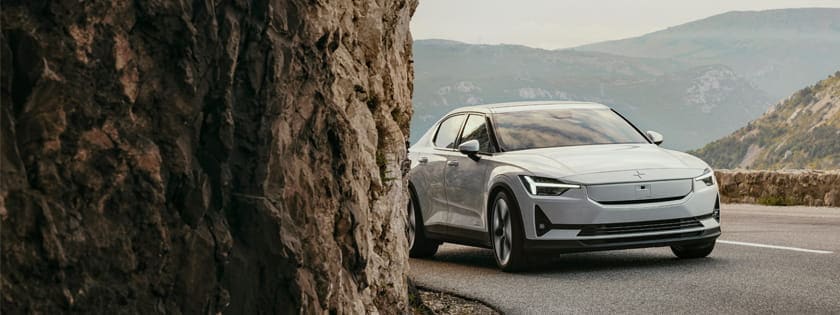- The M3 CS ups the ante on the M3 Competition thanks to parts pulled from the M4 CSL.
- In addition to more power, the M3 CS gets a retuned adaptive suspension, steering and brakes as well as lightweight materials.
- The price is a significant jump over the M3 Competition.
The 2024 BMW M3 CS Is a Near-Perfect Sport Sedan
The CS isn't as hardcore as the M4 CSL, but that's probably a good thing for most drivers. There's just one catch.
Divisive styling aside, there's a lot to like with the current-generation BMW M3. A potent turbocharged inline-six, available all-wheel drive and excellent chassis tuning make it one of the best-driving sedans on the road. Sticky tires, strong brakes and the ability to maintain performance lap after lap make it a joy on a track, too. But as the 2023 BMW M4 CSL showed, there's always room for improvement. With this latest car, BMW took some of the best bits from the limited-edition M4 CSL and applied them to the M3 Competition. We hit the track in the new M3 CS to see how all of these changes stack up.
The new Competition Sport
CS stands for Competition Sport, and as the name implies, the M3 CS is a pumped-up version of the M3 Competition. This is far from the first CS model — the name dates back to the BMW E9, the chassis code for cars like the BMW 3.0 CS and 3.0 CSL. Since then the CS moniker has been applied to a handful of other models, with recent additions including the F87-generation M2 CS, the F90-generation M5 CS and the current G82-generation M4 CSL. The general CS formula calls for reducing weight, increasing power, and sharpening the suspension and steering, all in an effort to boost on-track performance.
As the BMW M3 is basically the four-door version of the BMW M4 coupe, it's not surprising that much of the M3 CS' changes were pulled directly from the M4 CSL. Most notable is the engine, which is significantly more powerful in the CS than it is in the Competition. The twin-turbo 3.0-liter inline-six makes 543 horsepower and 479 lb-ft of torque, the same as the M4 CSL. That's 40 more horses than the Competition, though torque output remains unchanged. The additional power comes from an increase in boost, jumping from 24.7 psi in the Competition to 30.5 psi in the CS.
The CS' drivetrain isn't totally identical to the CSL's. Both use a quick-shifting eight-speed automatic that's straight from the Competition (a manual transmission is only available on the less powerful rear-wheel-drive M3 and M4), but the M3 CS comes standard with the Competition's optional all-wheel-drive system while the M4 CSL is rear-wheel-drive only. More than the number of doors, the RWD vs. AWD layout is the single biggest difference between the two cars.
All-wheel drive pays dividends on the launch, reflected in BMW's estimated 3.2-second 0 to 60 mph estimate for the M3 CS. That's 0.4 second quicker than BMW's estimate for the M4 CSL despite the latter weighing less (giving the M4 a superior power-to-weight ratio). While we haven't yet fully instrument-tested the M3 CS, we expect it to be a bit quicker than BMW's estimate. We've clocked a 3.2-second sprint time in the M3 Competition, and that car makes less power and weighs more than the CS. We think BMW might be a bit conservative here, though that's not a complaint. Based on our years of testing, we've seen that BMW has a history of underpromising and overdelivering.
But it's not just the powertrain that's been tweaked. The drive modes, stability control settings, adaptive suspension, steering ratio and brake response are also refined. The brakes are the same as those on the Competition, and, like that model, the CS is available with carbon-ceramic brakes for better track performance. The wheels measure 19 inches up front and 20 inches in the rear, and Michelin's excellent Pilot Sport Cup 2 R tires measuring 275/35ZR19 at the front and 285/30ZR20 in the rear are a no-cost and highly recommended option.
The M3 CS hasn't gone on quite as big a diet as the M4 CSL, though it is lighter than the standard M3. BMW employs weight-saving carbon fiber-reinforced plastic for the roof, hood, front splitter, front air intakes, exterior mirror caps, rear diffuser, rear spoiler and much of the interior trim. The seats, too, are BMW's lightweight carbon buckets. All together, BMW says the M3 CS weighs about 75 pounds less than the M3 Competition with AWD.
It's also worth noting that the M Driver's package — optional on the Competition — is standard on the CS. In addition to raising the car's top speed to 188 mph, buyers will get a one-day driving class at a BMW Performance Center to get familiar with and learn to exploit the CS' potential.
Visually, the CS doesn't look all that much different than the Competition. Changes include a frameless grille and cool yellow (rather than amber) daytime running lights, both from the CSL. The lack of obvious exterior changes keeps the CS relatively subdued compared to its donor car, though we wish the M4 CSL's cool duck-billed trunklid carried over to the CS.
Hitting the track
It doesn't take long to really feel the difference between an M3 Competition and the CS. It's not wholly transformed; the core car remains the same, but everything feels a little tighter or a little sharper as if a few layers of filtering between your inputs and the car have been removed.
The extra oomph is the first thing you notice. At low to mid revs, the M3 CS doesn't feel any different than an M3 Competition. Not surprising given the torque output remains unchanged. What you feel is how much harder the CS pulls at the top end. That's saying something given how strong the M3 Competition already feels under throttle. The power is smooth, too, with very little turbo lag and snappy shifts from the eight-speed.
You can have all the power in the world, but it doesn't matter if a car is traction-limited. Here's where the M3 CS has somewhat of an advantage on the M4 CSL, at least in terms of pure performance. The M4 CSL is rear-wheel-drive, a decision that was done partially to save weight and partially for dynamics. It makes the two cars feel different through a corner, where the all-wheel-drive CS can claw its way out with the front axle. The M3 CS feels more sure-footed than the M4 CSL, so you can get on the gas a little earlier to explode out of a turn.
The extra power and reduced weight help the M3 CS feel lighter on its feet than rivals, with less roll in corners and less dive under braking. There's lean, but the CS corners flat, and the sporty bucket seats do an excellent job of keeping your butt in place. The optional carbon-ceramic brakes on our test car held up over our time on the track, with no notable brake fade or drop in performance.
For decades, BMW was known for featuring excellent steering feel in its cars. That reputation has taken a hit over the past decade or so, but the M division has been moving things back in the right direction, as shown with models like this new CS. It's more than just the quicker ratio, which helps the CS feel sharp when turning into a corner. There's just more feel everywhere, even going straight. Bumps and imperfections in the pavement are relayed through the wheel, so you always have a good sense of what the front tires are doing. This extra layer of information does wonders for engagement. It gives you the confidence to really push in a corner since the steering will let you know when the rubber starts to lose grip.
Lap after lap, the M3 CS was a riot on track. When those Michelin tires warmed up a bit, traction felt seemingly limitless. There was less understeer in a corner than you might expect from an all-wheel-drive car. That's in part to the all-wheel-drive system's setup, which sends most of the power to the rear axle for a more traditional sport sedan feel. And if you want to have some real fun, you can disable power going to the front axle. That will allow for a hint of drifting, though you'll have to put in the work to intentionally break the grippy rear tires loose.
Would the M3's six-speed manual have been more engaging and a little more fun on the track? Sure, but the car would have also been slower, and the automatic is no punishment. It's extremely quick on both up- and downshifts, though it settles down and offers smooth performance when on the street.
Here's the rub
The M3 CS has one significant problem: It's not cheap. With a base price of $119,695, the M3 CS is $34,400 more than an M3 Competition xDrive and $42,700 more than a base rear-wheel-drive M3. That's a significant gap, even at those prices. There's no doubt the CS drives better than the Competition. It's quicker, more responsive and more agile on a track, but the difference in handling and overall performance is less noticeable on the street. And the Competition is a hair more practical, as part of the weight savings on the CS comes courtesy of a redesigned center console with no cupholders. There are still bottle holders in the door cards, but there's nowhere to stash a latte in the M3 CS.
Whether the price gap is worth it depends on what you want. If you're looking for the absolute pinnacle of what a road-going M3 is capable of — especially for track duty — it's the CS. But if you're only doing occasional track days and mostly spending weekends on winding back roads, we think the M3 Competition xDrive is the better car to live with. Just use some of the money you save on those sweet Michelin Pilot Sport Cup 2 R tires.
Edmunds says
The M3 CS takes the best bits from the M4 CSL and puts them in a more livable and practical package. It's not quite the honed machine the CSL is, but this is easily one of the best sedans BMW has ever made. The only catch is the price, so unless you're doing a lot of track days, the M3 Competition xDrive might be the better buy.
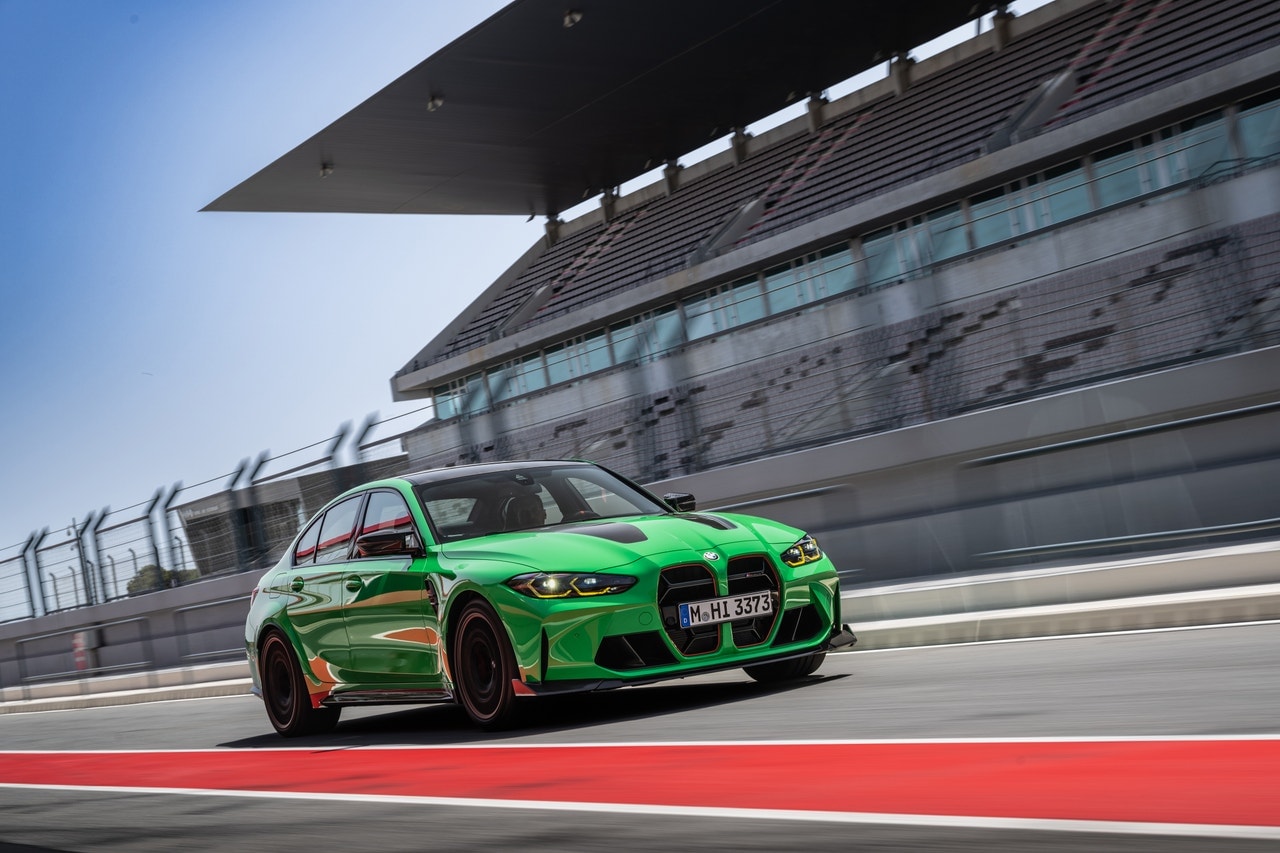
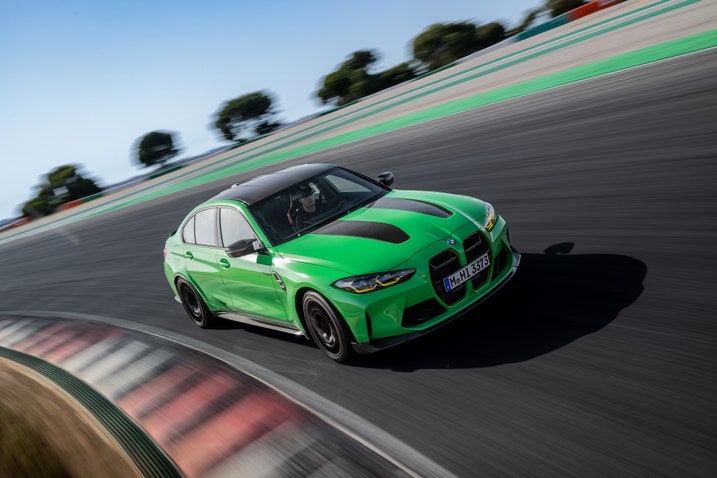

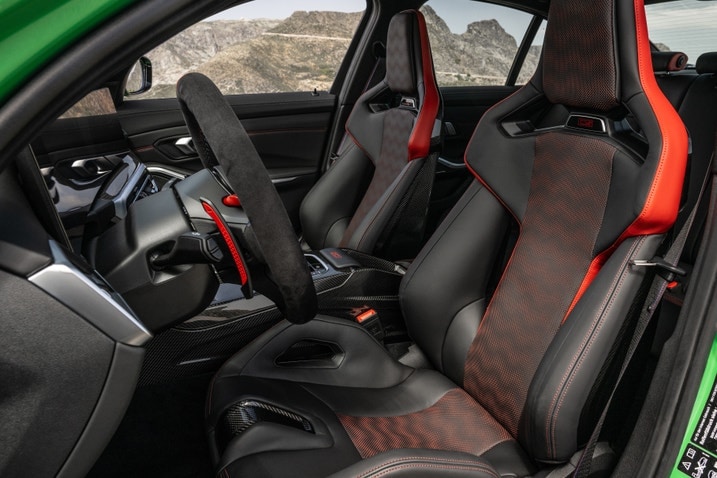
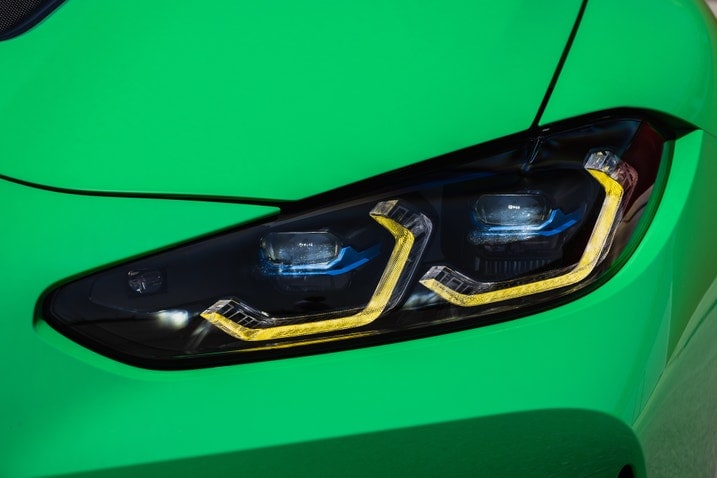
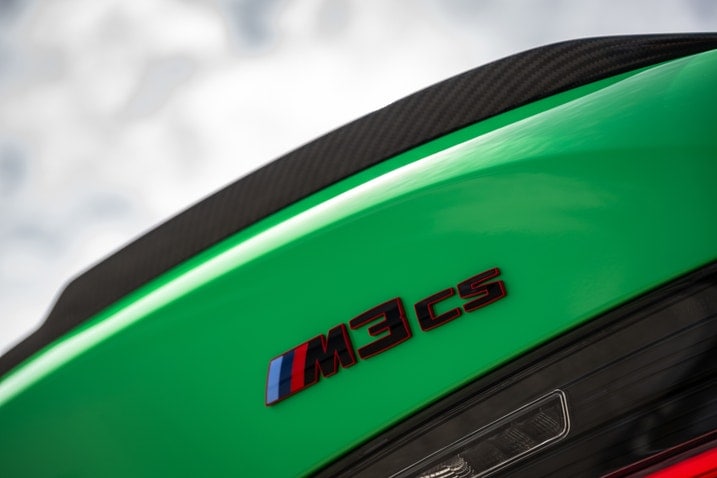
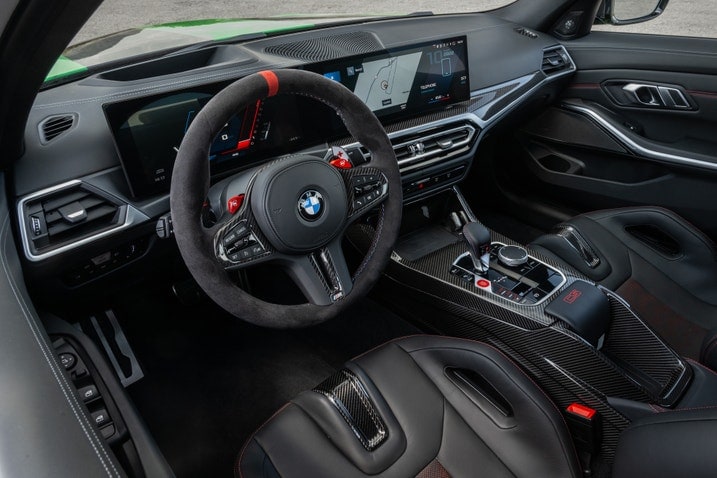
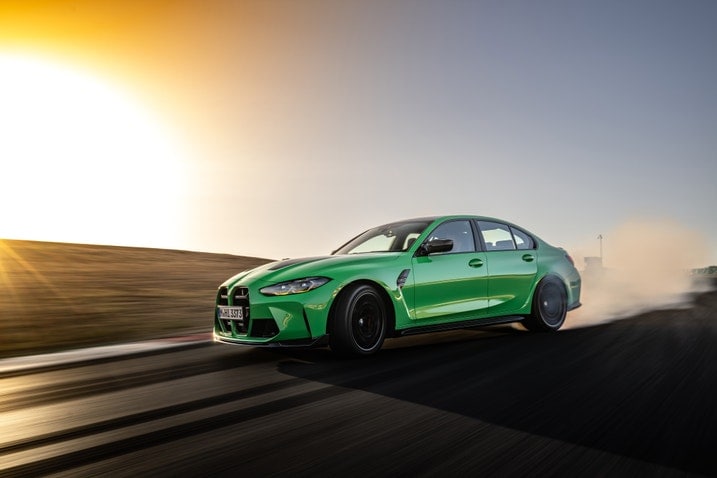
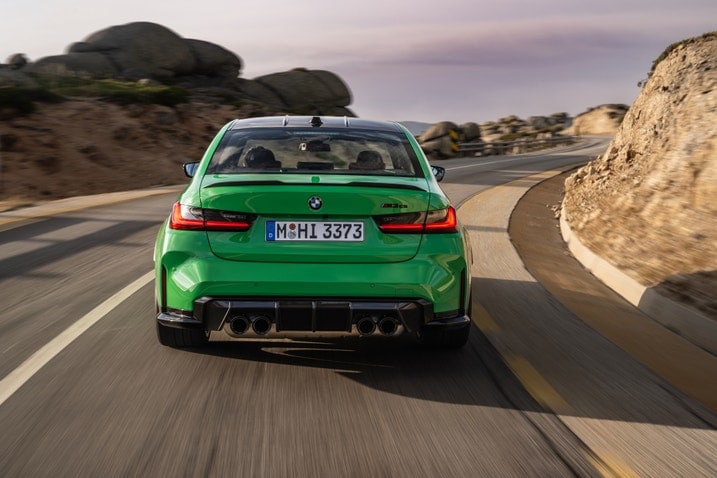
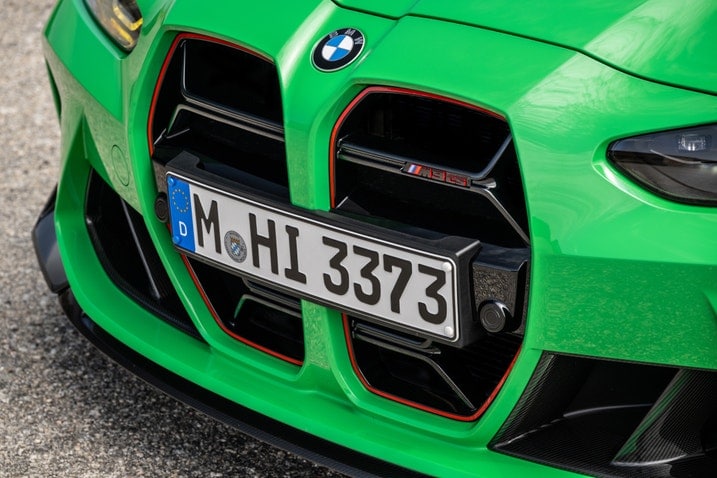
 by
by 